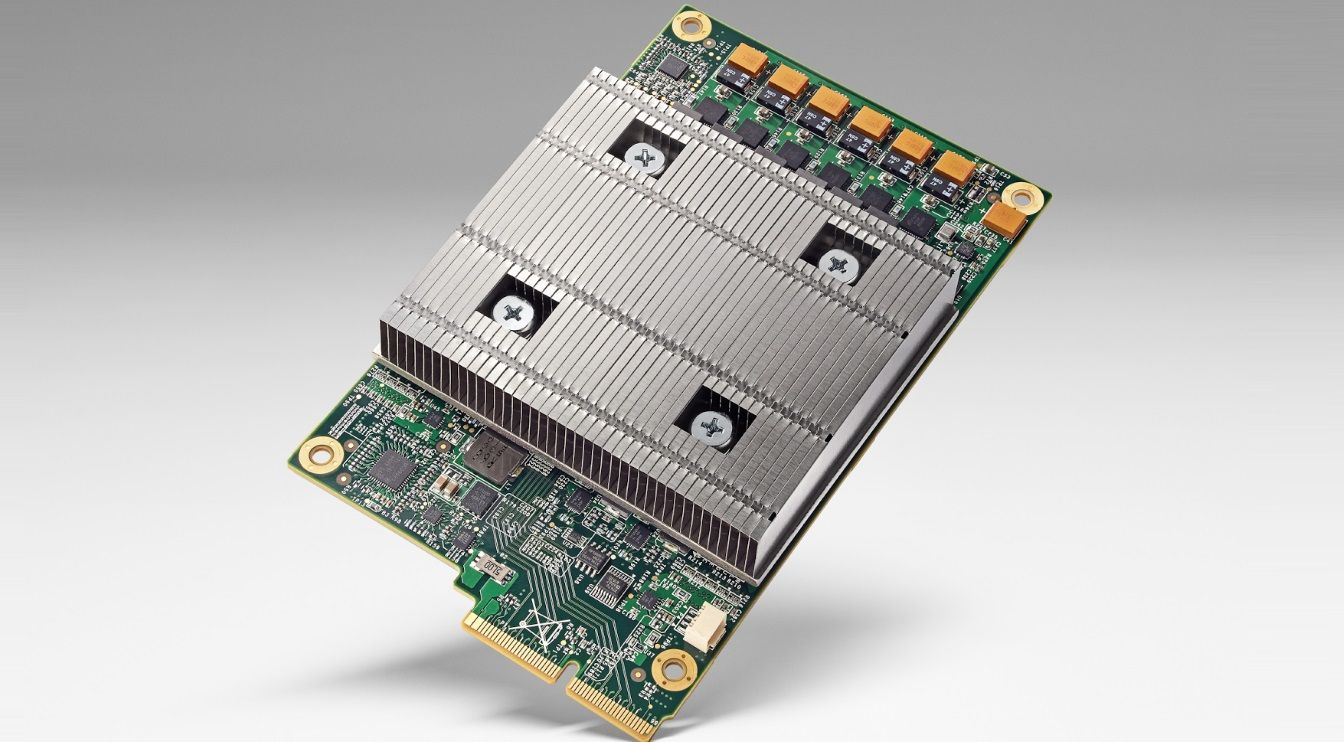China’s Artificial Intelligence (AI) capabilities have advanced dramatically over the past decade, and the dragon is now poised to overtake its key competitors as the world’s leading AI powerhouse.
US F-35 Stealth Fighters Deployed To South Korea Amid Threat Of Tactical Nuke Missiles From North
Ironically, China’s AI advancement is being fueled by the equipment made by China’s biggest opponent, the United States.
With a compound annual growth rate of 24.8%, China’s AI core business is anticipated to increase from 199.8 billion yuan ($29.89 billion) in 2021 to more than 600 billion yuan ($89.76 billion) in 2026, according to An Hui, Deputy Chief Engineer of the China Center for Information Industry Development.
Speaking at a parallel forum of the 6th World Intelligence Congress, Hui informed that China has applied for more than 50% of the AI patents in the world and has already secured 6% of the patents it applied for.
It was recently revealed that China could gauge party loyalty among members by tapping into AI.
However, this technological progress in part belongs to the US. According to a new report released by the Center for Security in Emerging Technology (CSET), China is progressing toward becoming the world leader in artificial intelligence by 2030, thanks to chips developed by American corporations.

According to the report, the Chinese People’s Liberation Army (PLA) has made great strides in implementing artificial intelligence for combat and support roles over the last five years.
“Chinese leaders broadly expect AI to usher in the “intelligentization” of military affairs, characterized by ubiquitous sensor networks, more frequent machine-on-machine engagements, and a faster tempo of operations.”
EurAsian Times had earlier reported that Chinese military researchers claim to have developed an AI-based anti-hypersonic defense system where the AI can predict the trajectory of a hypersonic glide vehicle as it approaches a target.
PLA’s advancement in AI and related fields largely relies on continuous access to a unique class of semiconductors AI chips employed to train cutting-edge machine learning systems. These AI chips are produced by American industries based in or out of the United States.

“Nearly all of them were designed by Nvidia, Xilinx (now AMD), Intel, or Microsemi,” according to 97 public documents of Chinese military procurement of AI chips, according to the researchers. “By comparison, we could not find any public records of [Chinese military] units or state-owned defense enterprises placing orders for high-end AI chips designed by Chinese companies, such as HiSilicon (Huawei), Sugon, Sunway, Hygon, or Phytium.”
US Ignorance Powering China’s Technology
Many Asian firms, like Samsung in South Korea and the Taiwan Semiconductor Manufacturing Company in Taiwan, significantly manufacture US-designed chips.
Despite the growing Chinese belligerence against the self-ruled island state of Taiwan, the latter anticipated that a Chinese invasion would be just a matter of time.
A US Army War College’s quarterly academic journal had earlier advised Taiwan to destroy its semiconductor industry if China decided to invade the country.
On its part, Taiwan is looking to diversify its chip industry in countries it thinks would come to its defense in case of an invasion. However, until now, the output has been assisting China incredibly.

American Nvidia GPUs, or graphics processing units, are the industry leader in semiconductors that power sophisticated artificial intelligence programs.
While the Chinese government has spent heavily to develop its chips, the report says, “High barriers to entry, including a reliance on intrinsic knowledge and highly specialized equipment, have so far prevented Chinese companies from catching up.”
Samsung has its own Artificial Intelligence designed chip. Soon, others will too https://t.co/nsUT3iwqSJ #ai #ArtificialIntelligence #MachineLearning #DeepLearning #samsung pic.twitter.com/RbB8C0bNA9
— Nige Willson (@nigewillson) August 16, 2021
While the semiconductor industry is primarily centered in Asia, US firms hold 47% of the global sales market, followed by South Korea (19%), Japan (10%), Europe (10%), Taiwan (6%), and China (5%). The Biden administration has also urged the US Congress to unlock $52bn in subsidies to domestic chip manufacturing.
The Biden administration has retained the limits that the Trump administration put in place in 2020 to prevent American semiconductor designs from entering China.
However, that hasn’t stopped the Chinese military from acquiring chips through several means, including purchases made through Chinese mediators and, in some cases, through the creation of shell companies.
Decoupling Would Not Be Easy
The US government could consider implementing more controls to address the issue. Still, according to the report, these new restrictions won’t likely have the desired impact by themselves without a boost in the government’s enforcement and investigation powers.
“Chips themselves are hard to track. Although they are technically sophisticated, physical inputs to AI development, chips in transit do not carry an easily observable signature,” the authors write.
The Commerce Department should, they contend, collaborate with businesses to better understand which chips might be most pertinent to the Chinese military’s AI objectives and “coordinate with partners to screen intended end-users and prevent their export,” they add.
Additionally, the American intelligence agency needs to analyze open-source information on Chinese semiconductor contracts more thoroughly. The CSET researchers “identified seven Chinese military vendors not listed in US end-user export control regimes. There is room for open-source analysis to address other security challenges.”
Taiwanese companies also request incentives from the country to hasten the construction of new manufacturing facilities in the United States. Taiwan, which has a market share of 63% in microchips, had primarily focused on the US and Japan.
However, it now appears that Taipei is ready to join the European semiconductor ecosystem.
When the US and China are at loggerheads with a looming danger of a military conflict for Taiwan, it becomes a security imperative for the US to dismantle whatever support its industries are providing to fuel China’s military technology.
- Contact the author at sakshi.tiwari9555@gmail.com
- Follow EurAsian Times on Google News




